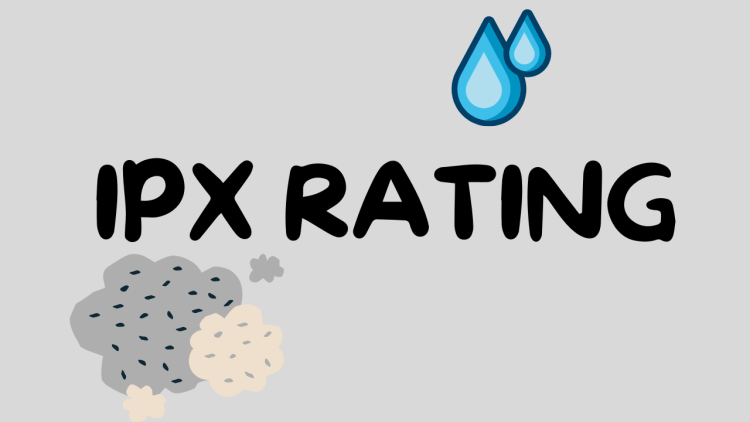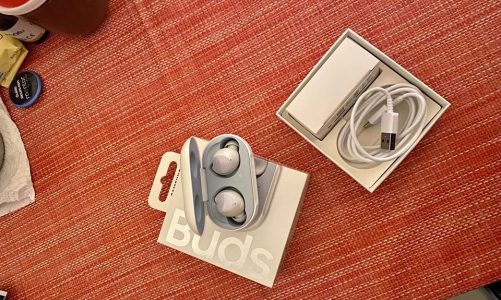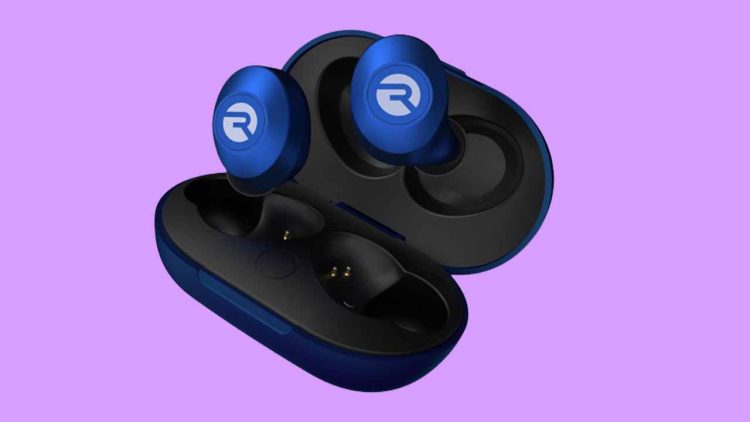IPX rating is a standard system used to classify the degree of protection that an electronic device offers against dust particles or liquids. Therefore, understanding the IPX rating system helps you understand under what conditions and up to what level your electronic device offers protection against solids or liquids.
So, this guide will help readers understand what IPX ratings are, how they work, and what each digit in the rating refers to.
What Does “IPX” Stand For?
IPX stands for Ingress Protection Marking or International Protection Marking. It is a system that indicates the level of protection offered by the device case against dust, dirt, and liquids.
The “X” at the end is replaced by a numerical digit from 0 to 9 to express a different level of protection against solids or liquids.
Please note that the IPX rating is totally different from the IP and NEMA rating system. IPX only addresses the protection against solids and liquids when it comes to electronic devices. However, IP and NEMA ratings cover a broader spectrum of environmental conditions and are mostly used in industrial or commercial sectors.
However, IPX is still the advanced form of IP ratings set back in the year 1976. The IPX rating on your electronic device decides to what extent it can withstand the water, dust, etc. This is the reason why there are different levels of IPX rating that you need to know about.

IPX Rating Levels
Here’s a table to help you easily understand this:
| IPX Rating | Description |
|---|---|
| IPX0 | No special protection. |
| IPX1 | Protection against vertical falling water droplets. |
| IPX2 | Protection against falling water droplets when tilted up to 15 degrees. |
| IPX3 | Protection against spraying water at angles up to 60 degrees from vertical. |
| IPX4 | Protection against splashing water from any direction. |
| IPX5 | Protection against low-pressure jets of water from any direction. |
| IPX6 | Protection against powerful water jets or heavy seas. |
| IPX7 | Dust-tight (no ingress of dust) and protection against temporary immersion in water up to 1 meter for 30 minutes. Suitable for waterproof electronics and water-resistant outdoor gear. |
| IPX8 | Dust-tight (no ingress of dust) and protection against continuous immersion beyond 1 meter. Specific immersion depth and duration are typically specified by the manufacturer. |
| IPX9 | Dust-tight (no ingress of dust) and protection against high-pressure water jets or steam cleaning. Often used in industrial and commercial settings |
Choosing the Right IPX Rating
Here are some factors below that you need to keep in mind:
Environmental Conditions
You are considering the IPX rating just because you will be using your device in rough conditions. It’s always better to keep in mind the weather conditions or environment where you will use your device.
For example, if you or example, if you plan to use a device primarily outdoors in a rainy environment, a higher IPX rating like IPX4 to IPX7 would be better.
Similarly, if you are visiting a desert where there is a lot of dust or sand, then having an IPX7 rating means your product will be completely dust-tight.
Use
The intended use of the product plays a critical role in determining the right IPX rating. For example, if you are using wireless earbuds while running outdoors, then you must consider the IPX4 rating earbuds to get protection from swear and drops of rain.
Likewise, if you are out swimming along with your device, then choosing a higher IPX rating would ensure protection of the internal components of your device when submerged underwater.
Please note that not all IPX ratings are designed for prolonged or deep submersion. Devices intended for underwater use need a higher IPX rating such as IPX8.
Debunking Myths About IPX Waterproof Ratings
There are a lot of misconceptions and myths about the IPX rating that must be debunked so that you don’t have any confusion in mind.
Higher IPX Ratings Mean Better Performance
Most people think that higher ratings would result in higher performance, which is wrong. As I’ve discussed earlier in this article, IPX ratings only give you protection against solids and liquids in a specific environment. These ratings have nothing to do with the overall build quality and performance of the product.
Waterproof Means Waterproof in All Conditions
Most users believe that just because the device is IPX-rated, it won’t get damaged when fully submerged under the water, again this is not true.
IPX ratings come with depth and duration guidelines which you must follow. An IPX7-rated device protects against temporary immersion in shallow water for 30 minutes. Keeping your device for over 30 minutes does not guarantee protection.

Waterproofing Never Degrades
Some users believe that their device will stay waterproof for decades, which is a wrong concept.
Waterproofing material can degrade over time due to wear and tear imposed by the external environment. Seals and adhesives can deteriorate, compromising a device’s waterproofing capabilities.
Final Lines
So, you know have enough knowledge of what IPX ratings are and how they work. IPX ratings have cleared a lot of doubts that users may have before buying a device and using it in different environments. By simply looking at the IPX ratings you can now decide if you can use a device in rainy weather or not.

I’ve been writing about gadgets for over 7 years now. I have a strong taste for music, no matter if it’s pop or classic. My passion for music has enabled me to come closer to audio equipment. I like writing and sharing my personal experience with audio equipment that passes by me.



